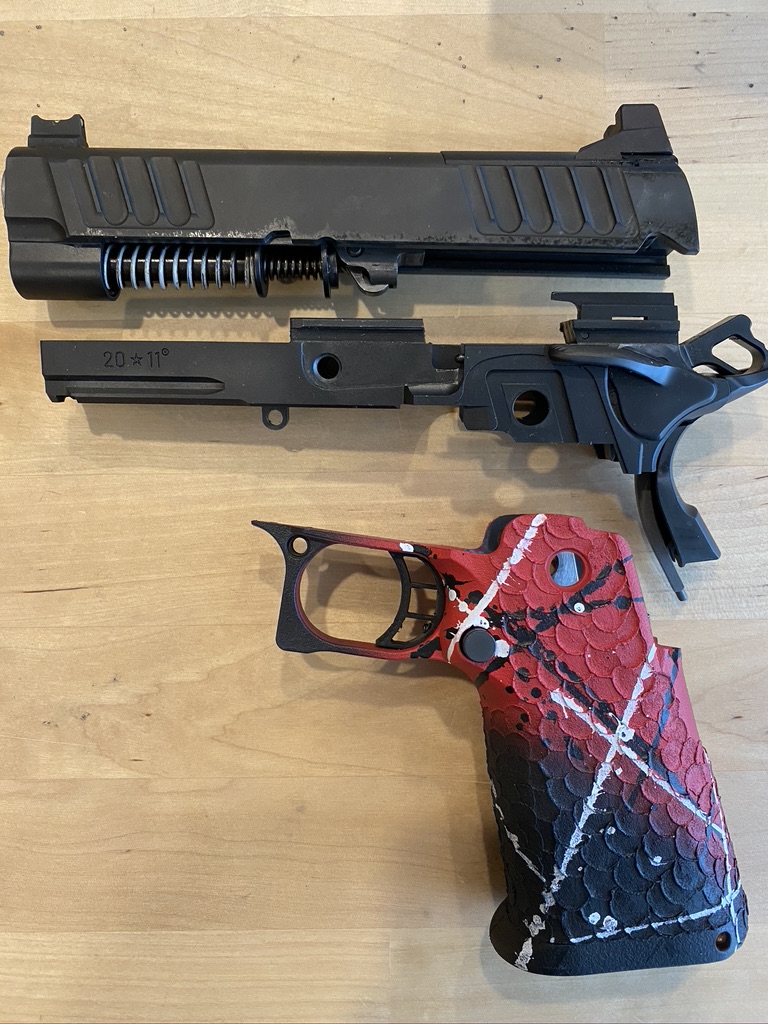Staccato [stəˈkädō] Performed with each note sharply detached or separated from the others; the sound of rapid-fire pistol shots.
A quick history of handgun types is a fairly short list. The revolver kicked off the sidearm craze in the late 19th century. In fact, the Smith & Wesson Model 10 is the longest actively manufactured handgun in the world. It has been in continuous production since 1899. Old Slab Sides, the Model of 1911 by John Browning follows, serving as our primary military sidearm for 75 years. The French Army put out bids for a handgun with greater capacity than the 1911 and Browning almost finished the Hi Power, before his untimely death in 1926. The FN Hi Power went on to be used by nearly 60 countries over the next 50 years. The compact market saw a surge of products before and after World War II, with Beretta offering pocket pistols in various sizes along with other European manufacturers. Walther released the PPK just before the war, and the PPK/S to get past our import restrictions when James Bond carried it in the 60s. H&K and SIG Sauer made it big here in America in the 70s and then the GLOCK made its US debut in the mid-80s. Since that time, every vendor released a polymer pistol in the three or four sizes ranging from competition to full size, compact and sub-compact. The past decade has given the carry market the micro and pocket pistols from a dizzying number of players, including Mossberg, of shotgun fame. The past five years the market has seen a resurgence of the modular pistols that fit together like legos. The SIG P320 and P365 series is probably best known for these.
In 1990, a Texas-based company was started by Virgil Tripp to build custom 1911s for Chip McCormick, the pistol champion. A few years later, Sandy Strayer joined Tripp to compete with Para Ordnance and their high capacity 1911 frame. They started a new company called Strayer-Tripp International, or STI Firearms, manufacturing modular 199-style pistols for IPSC competitors.
The internal workings of their pistols are virtually identical to the 1911 with a few exceptions. First, the pistols are primarily 9mm, not .45 ACP, giving them more than double the capacity of the venerable pistol, not unlike the Hi Power. Second, instead of an all steel pistol, the frame is a combo of steel for the dust cover and slide rails, with a polymer grip module. Para’s grip was noticeably wider than a standard 1911, being screwed onto their polymer grip. STI’s grips were actually molded into the polymer grip module, giving it the natural feel of a 1911, but with less than half the weight. The grips can be stippled and shaped the same way folks are personalizing their GLOCKs. in May, STI rebranded itself after its new line of 2011 pistols, the Staccato.

I love the feel of a 1911 in my hand, and I especially like shooting a 9mm 1911. I’ve been fascinated by the 2011 variant since it was first released, but since I’m not in the competition circuit (yet), I’ve never had a chance to shoot one. That recently changed. 🙂 Staccato is no longer manufacturing pistols solely for the competition market. They have a full range of 2011 pistols for home defense, concealed carry, and LE duty carry. The Staccato P is the full size line, in use by the Texas Rangers, US Marshalls and LAPD Metro. The Staccato C is the carry line, which is where I stepped in. The Staccato C is a single-stack 9mm. The C2 is double stack. Both are available with and without an optic slide cut. Dawson Precision partnered with Staccato to offer the Dawson Universal Optic System (DUO), not unlike the universal optic mounting options available from GLOCK, SIG, S&W and every other player, which comes with several plates to attach your optic of choice.
This month I bought Staccato’s latest iteration, the C2 DUO. It came with six steel 9mm 17-round magazines and the optic mounting plates all packed neatly in a smart pistol bag. I’ve put about 500 rounds through it so far, and I am impressed. The marketing hype is true. This is one of the flattest shooting pistols I’ve ever fired. It shoots like the CZ Ultra Shadow 2, flat and accurate, with amazingly little recoil and muzzle flip. The difference is the weight. The Shadow weighs 43 oz. but the Staccato’s aluminum frame and polymer grip weigh in at only 26 oz. It’s almost half the weight!

I had only one issue with the Staccato. The grip was wider than I expected. Add to that the aggressive “star” pattern, and it was leaving some serious imprints on my hand. I removed the grip held on by four screws and sent it off to Extreme Shooters to have the grip circumference reduced and the stippling redone with their DVC/Dragon Scale pattern. Extreme had been doing all the stippling work for STI previously, so the grip is in good hands.

Extreme Shooters did a full grip reduction, custom stipple scaling texture and double-undercut trigger guard. I asked for a custom paint job as well.

